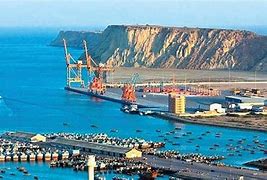In the dynamic landscape of international trade, Pakistan’s exports to South China have experienced a remarkable upswing, marking a significant surge of 16% during the year 2023. This notable achievement reflects the strengthened trade relations between the two nations and underscores Pakistan’s ongoing endeavors to diversify its export markets. Muhammad Irfan, Trade and Investment Counsellor at Pakistan’s Consulate in Guangzhou, China, highlighted these developments, emphasizing the pivotal role of collaborative efforts in fostering trade growth.
According to the latest data released by the General Administration of Customs of China (GACC), the total value of exports from Pakistan to South China soared to a record high of $973.21 million from January to December 2023, compared to $836.645 million in the preceding year. This upward trajectory underscores the resilience and competitiveness of Pakistan’s export sector in the global marketplace.
Irfan noted that Guangdong Province emerged as a significant importer, receiving $379.011 million worth of goods from Pakistan in 2023, followed closely by Fujian Province with imports totaling $367.30 million. These figures represent a substantial increase from previous years, with imports in Guangdong Province alone rising by 48%. Moreover, other regions such as Guangxi Zhuang Autonomous Region and Hainan Province also experienced notable growth in imports from Pakistan, further contributing to the overall surge in trade volume.
The surge in exports to South China can be attributed to various factors, including the positive impact of the China-Pakistan Free Trade Agreement (CPFTA). This bilateral agreement has effectively reduced or eliminated tariffs on a wide array of goods, enhancing the affordability and competitiveness of Pakistani products in the Chinese market.
Furthermore, active participation in key events such as the Food & Agriculture Exhibition and TEXPO 2023, coupled with the production of high-quality goods at competitive prices, has bolstered demand for Pakistani exports in South China. Textiles, leather products, seafood, and agricultural commodities have emerged as key sectors driving export growth, with notable increases in demand observed for products such as sesame seed, rice textiles, and garments.
Irfan underscored the pivotal role played by the Pakistani government in facilitating export growth to South China through various incentives and support mechanisms for exporters. These initiatives include subsidized loans, export financing schemes, and participation in trade exhibitions aimed at showcasing Pakistani products in the Chinese market.
Moreover, the geographical proximity of South China to Pakistan has facilitated seamless trade logistics, reducing transportation costs and time. This advantage has enabled Pakistani exporters to deliver their products more efficiently, thereby gaining a competitive edge in the region.
The increase in exports to South China signifies a significant milestone for Pakistan’s economy, contributing to a more balanced trade relationship between the two countries. By reducing dependency on imports from China, Pakistan is poised to strengthen its economic resilience and foster sustainable growth in the years ahead.

















